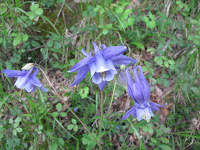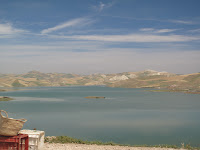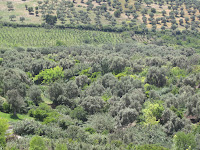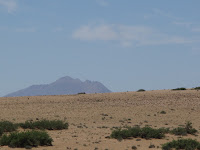Spoiler alert! This post contains tedious material, some
objective and some subjective, about obtaining a Long Term Residence Visa for
Spain. I think it’s important that I post this, because there is very little
information available on line. Some of the information may be specific to the
Spanish Consulate in San Francisco, California. You can consider this
supplemental information for these other excellent web sites (well, 3 out of 4
are excellent):
Why would you want to apply for a Residence Visa?
If you want to legally stay in Spain for longer than 90 days (regular tourist visa), you don’t have many choices. You can:
If you want to legally stay in Spain for longer than 90 days (regular tourist visa), you don’t have many choices. You can:
* enroll as a student at an accredited university OR
* obtain a Long Term Lucrative or Non-Lucrative Residence
Visa.
The Lucrative Visa allows you to work, but you must already
have a job in order to apply; the Non-Lucrative Visa means you cannot legally
work. The Non-Lucrative Residence Visa requirements include providing documentation
of means of support while in Spain.
I’ve spoken with a number of people
who were of the opinion that stays of longer than 90 days were common and that Immigration
had no way of tracing people who overstayed their tourist visa. The people I've met
who decided on that approach were also anxious about returning to the
US via Spain or another EU country, as they didn’t want to be detained, fined,
jailed or blacklisted from returning to Spain. And forget about leaving Spain to visit a non-EU country as your passport will be inspected upon your return to Spain. Only you can decide what is
best. If you decide to apply for the Long Term Non-Lucrative Residence Visa, be
prepared: it is a time consuming process fraught with bureaucratic delays, misinformation, lack of information and
seemingly senseless paperwork.
If you decide to pursue the Residence Visa, here are some suggestions that might ease your way:
If you decide to pursue the Residence Visa, here are some suggestions that might ease your way:
*Start in plenty of time and don’t book your tickets until you have the
visas in hand. Generally, you can expect
to hear back from the consulate in 8-10 weeks, but this depends on holidays
(Spanish, not US), and the timing of the mail pouch that contains your
application. Your application is physically sent to Madrid and the results are
physically sent back to your consulate/embassy and this may occur only every
week or every other week. You might miss the mail pouch by only one day!
*Understand in advance that the application is crazy making, it's not just you!
*The address where you will reside while in Spain is a critical piece of information. Of course, there’s a catch-22 here: since you aren’t in Spain it's difficult to find a place to live and you probably won’t find someone willing to rent to you without an account at a Spanish bank, which you can’t get because you don’t have a Residence Card. See? But the address is very important because you MUST obtain your residence card from the authorities in the city you indicate on the application. So, don’t use your sister-in-law’s best friend’s cousin’s address in Granada if you plan on staying in Santiago de Compostela, unless you are able to travel to and from Granada and the cousin is willing to vouch for you with the authorities (more on this later).
*The address where you will reside while in Spain is a critical piece of information. Of course, there’s a catch-22 here: since you aren’t in Spain it's difficult to find a place to live and you probably won’t find someone willing to rent to you without an account at a Spanish bank, which you can’t get because you don’t have a Residence Card. See? But the address is very important because you MUST obtain your residence card from the authorities in the city you indicate on the application. So, don’t use your sister-in-law’s best friend’s cousin’s address in Granada if you plan on staying in Santiago de Compostela, unless you are able to travel to and from Granada and the cousin is willing to vouch for you with the authorities (more on this later).
*The application asks you when you are leaving for Spain, but a
general estimate at this time is OK.
*Make sure you check and verify the translations of the documents as companies you make mistakes. And yes, the copy of the marriage certificate needs to less than
90 days old, because, as the consular staff explained to me, “you might have
been divorced or something.” Never argue with someone who has power over your
visa!
How much time will it take to get the application together?
How much time will it take to get the application together?
I figure I worked on the application and gathering
supporting documents 2-3 hours/day, 5 days/week for a month. Being unemployed
or retired is a definite plus. There’s a lot of time spent just sitting in the consulate
offices, too.
After the application is completed:
After the application is completed:
So, let’s assume that you've completed your application, made your appointment with the consulate and that your application has been accepted. If all goes
well, you’ll hear from the consulate in 8-10 weeks, either by phone or by e
mail or both. If you have applied as a married couple, they may specifically
state that the husband’s visa is ready to be picked up. Don’t panic-the wife’s
is ready too. They’ll give you a time to drop off your passport with specific
travel information (this is when you need it) and a time to return and claim
the passport with the visa inside. It shouldn’t take more than a few hours.
When the passport is returned to you, make sure you receive an official letter
also. The letter should have a statement that you have been approved for a
Non-Lucrative Residence Visa and, more importantly, the address in Spain where
you need to go to complete your residence application process. The consular
staff may say that they don’t provide the letters anymore because everything is ‘on
line’ but, as politely and charmingly as possible, try to get a copy of the
letter, or at least the address of the Spanish Immigration office where you need to go. The letter will also list the documents you must take with you to the Immigration Office in Spain. [the documents may be, in fact, the pile of documents that were handed back to you during your application interview with the consulate, plus the empadronarse documents-see below-but there isn't 100% agreement between the list and the documents] The consulate may tell you ‘go to
any police station’, but unless you are in a very small town, this doesn’t
work. For example, in Bilbao I visited 2 police stations and 3 government
offices before being directed to the right office. Then, I had to call to make an appointment
and it took 3 days just to get through on the phone line.
The visa will be placed in your passport and it may state that you are approved for a 90 day stay, but this actually should not be a problem. If you get the approval letter, you will see that you have been approved for a longer period. The letter should state that, in order to complete your residence application, you must report to the office designated in the letter within 30 days of entry into Spain.
Empadronamiento (registration in a specific municipality for administrative purposes):
Empadronamiento (registration in a specific municipality for administrative purposes):
You are required to empadronarse before reporting to the immigration office. There are a couple of documents you will need in order to register with the authorities, or empadronarse, including a statement from your landlord or your sister-in-law’s best friend’s cousin that says you are renting or that housing is being provided to you. http://spanishsabores.com/2011/11/28/how-to-empadronarse-in-madrid/ has great instructions. I wasn't able to make an on-line appointment and when I showed up at the office, they insisted I had to have an appointment. It turned out that the next available appointment was in 20 minutes, which gave me just enough time to fill out the form. Sometimes it pays to be persistent.
Obtaining your temporary Residence Card:
With your empadronamiento paperwork in hand, it's time to head over to the office that deals with immigration affairs. In Madrid, the office of la Brigada Provincial de Extranjería y Documentación is on Avenida de los Poblados near the Aluche metro stop, almost off the southern part of the Michelin map of Madrid. You will wait several hours with hundreds of others wanting to become legal residents of Spain. Maybe, like me, you will feel humbled by the experience, because unlike most of my fellow petitioners I am not fleeing famine, abject poverty or religious or political persecution nor am I hoping to find a better life for my children. I am in Spain for what might be considered frivolous reasons. You can start a conversation with the people sitting with you, because you will wait a long time. I guarantee your life will be enriched by hearing their stories.
The clerk we saw in the Immigration Office didn't even look at the documents we were supposed to present. And the fact that we didn't have the original copy of the residence approval letter wasn't a problem either. We left the offices with a paper facsimile of a resident card and instructions to return in 45 days to claim the card itself. You actually have up to 6 months to retrieve the card, but don't bother to come back earlier than 45 days; it won't be ready. I was told that after 6 months, unclaimed cards are destroyed.
Obtaining the Residence Card:
After 45 days, picking up the card is fairly easy, almost anticlimactic. You will return to the same office where you obtained your temporary Residence Card. Yes, there's a wait, but you should be accustomed to it by now!
Congratulations/¡Enhorabuena! Enjoy your time as a resident of Spain.
Obtaining your temporary Residence Card:
With your empadronamiento paperwork in hand, it's time to head over to the office that deals with immigration affairs. In Madrid, the office of la Brigada Provincial de Extranjería y Documentación is on Avenida de los Poblados near the Aluche metro stop, almost off the southern part of the Michelin map of Madrid. You will wait several hours with hundreds of others wanting to become legal residents of Spain. Maybe, like me, you will feel humbled by the experience, because unlike most of my fellow petitioners I am not fleeing famine, abject poverty or religious or political persecution nor am I hoping to find a better life for my children. I am in Spain for what might be considered frivolous reasons. You can start a conversation with the people sitting with you, because you will wait a long time. I guarantee your life will be enriched by hearing their stories.
The clerk we saw in the Immigration Office didn't even look at the documents we were supposed to present. And the fact that we didn't have the original copy of the residence approval letter wasn't a problem either. We left the offices with a paper facsimile of a resident card and instructions to return in 45 days to claim the card itself. You actually have up to 6 months to retrieve the card, but don't bother to come back earlier than 45 days; it won't be ready. I was told that after 6 months, unclaimed cards are destroyed.
Obtaining the Residence Card:
After 45 days, picking up the card is fairly easy, almost anticlimactic. You will return to the same office where you obtained your temporary Residence Card. Yes, there's a wait, but you should be accustomed to it by now!
Congratulations/¡Enhorabuena! Enjoy your time as a resident of Spain.



















































